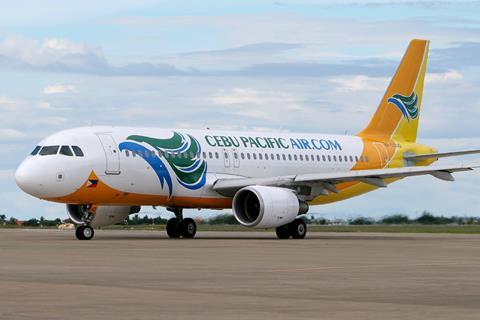Cebu Pacific Air has highlighted the bewildering array of coronavirus-related protocols as it works get passengers flying again.
In a virtual media roundtable, Cebu Pacific head of commercial Alex Reyes says travellers confront “a very complex situation” when making a decision about flying. As with many airlines, Cebu Pacific has a page listing testing and other requirements for various destinations, but it is extremely difficult to keep it fully updated.

“We try to capture all of the current regulations in place now,” he says. “It’s not perfect because the regulations are constantly changing…whether at the country level or even at the city level. They are constantly evolving and changing, as they react to the unique circumstances of their own locality.”
More often than not, he says, people still opt to buy a ticket, but there are travellers that are put off by the complexity involved in booking a flight and dealing with the correct testing protocols.
“I think the traveling public understands is that it is massively complex right now. Everyone is doing their part to try and make sure that yes, you can fly or no, you cannot fly. Or you get to fly as long as you do X, Y and Z.”
The key is making the process “clear and transparent” to travellers.
Covid-19 has hit the Philippines hard, including strict lockdowns earlier in the year that all but completely shut down air travel from mid-March to early June. According to the Johns Hopkins Coronavirus Resource Center, the country has 444,164 infections, second only to Indonesia in Southeast Asia.
Nonetheless, Cebu Pacific has been working to restore flights after operating less than 10% of its domestic network from June to November. It is now operating 400-450 flights weekly to 28 domestic and eight international destinations.
It has also relaunched services to leisure locations such as Bohol, Coron, Siargao, and Boracay.
On international routes, the only service operating at normal, pre-Covid-19 capacity is Manila-Dubai, operated daily with an Airbus A330. The carrier recently increased frequencies to Nagoya and Seoul Incheon, and will restart flights to Taiwan on 18 December.
Still, the low-cost carrier derived 66% of its third quarter revenue from cargo. It has converted an A330 for cargo work, and is carrying cargo on the seats of passenger aircraft.
In addition, the airline is conducting a trial where passengers are tested at Manila’s Ninoy Aquino International Airport before flights to the southern city of General Santos. From 3 to 14 December, passengers will undergo a free antigen test prior to boarding their flight. Only passengers who test negative will be allowed to board.
“It’s an approach we’re taking to assure the traveling public and local governments that we are not transporting any asymptomatic Covid-19 patients into their city or locality,” says Reyes. “It is another layer of protection to respond to the pandemic.”
After analysing the results of the trial, the airline will consider rolling out the testing initiative on other flights.


























